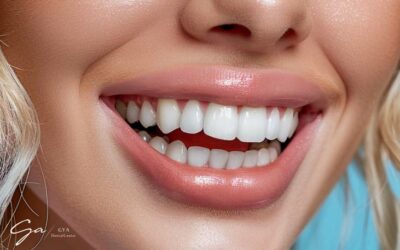Is it safe to continue tinting after an allergic reaction?

Strong 8k brings an ultra-HD IPTV experience to your living room and your pocket.
Introduction
Tinting, whether for eyebrows Eyebrow Hair Transplant in Dubai or eyelashes, has become a popular beauty treatment. However, for some individuals, it can lead to allergic reactions ranging from mild irritation to severe swelling or even anaphylaxis. This raises concerns about whether it's safe to continue tinting after experiencing such reactions.
What Causes Allergic Reactions to Tinting?
Ingredients in Tinting Products
Tinting products typically contain various chemicals that can trigger allergies in sensitive individuals. The primary allergens include:
Common Allergens Found in Tinting Solutions
Para-phenylenediamine (PPD): This chemical is commonly found in hair dyes and some tinting products. It's known to cause allergic contact dermatitis in susceptible individuals.
Hydrogen Peroxide: Used in tinting to activate color development, it can also cause skin irritation and allergic reactions in some people.
Ammonia: Often found in hair and eyelash dyes, it helps in opening the hair cuticle to absorb color but can be irritating to the skin and respiratory system.
Symptoms of an Allergic Reaction
Allergic reactions to tinting products can vary widely:
Mild vs. Severe Symptoms
Mild Symptoms: Itching, redness, mild swelling around the treated area.
Severe Symptoms: Intense swelling, blistering, difficulty breathing (anaphylaxis).
Immediate vs. Delayed Reactions
Immediate Reactions: Symptoms appear shortly after exposure to the allergen.
Delayed Reactions: Symptoms may develop hours or even days after the initial exposure.
Steps to Take When Reacting to Tinting Products
Immediate Actions Post-Reaction
If you experience symptoms during or immediately after a tinting session:
Washing and Soothing the Affected Area
Rinse Thoroughly: Use cool water to rinse off any remaining tinting product.
Soothing Measures: Apply a cold compress or gentle moisturizer to calm the skin.
Seeking Medical Attention
When to Consult a Healthcare Professional
Persistent Symptoms: If symptoms persist or worsen after initial treatment.
Severe Symptoms: In case of severe swelling, difficulty breathing, or any signs of anaphylaxis, seek emergency medical help immediately.
Importance of Patch Testing
Conducting a Patch Test Properly
Before any tinting procedure:
Patch Test: Apply a small amount of the product to a small area of skin (usually behind the ear or inner forearm) to check for any allergic reaction.
Evaluating the Severity of the Reaction
Mild Reactions and Their Management
Home Remedies and Over-the-Counter Treatments
Antihistamines: For mild itching or redness, over-the-counter antihistamines may help alleviate symptoms.
Topical Treatments: Calamine lotion or hydrocortisone cream can provide relief from mild skin irritation.
Severe Reactions and Emergency Response
Signs That Require Immediate Medical Help
Swelling: Especially around the eyes or face.
Breathing Difficulty: Wheezing, shortness of breath, or tightness in the chest.
Can You Safely Resume Tinting After an Allergic Reaction?
Consulting a Dermatologist
Professional Advice on Allergen Avoidance
Allergen Identification: A dermatologist can help identify eyebrow grafting cost specific allergens through testing.
Alternative Products: Recommend hypoallergenic or natural tinting products.
Testing Alternative Products
Choosing Hypoallergenic or Natural Formulas
Safer Options: Look for products free of common allergens like PPD, ammonia, and hydrogen peroxide.
Gradual Reintroduction of Tinting Products
Monitoring for Recurrence of Symptoms
Observation Period: Wait for the skin to fully heal before considering a patch test with alternative products.
Monitoring: Watch for any signs of recurring symptoms before proceeding with full tinting.
Preventing Future Allergic Reactions
Lifestyle Changes to Consider
Avoiding Allergens in Daily Life
Product Awareness: Read labels carefully for potential allergens in cosmetics and hair care products.
Environmental Factors: Limit exposure to known triggers, such as pollen or pet dander.
Maintaining Skin Health
Skincare Routines Post-Reaction
Gentle Products: Use mild cleansers and moisturizers suitable for sensitive skin.
Hydration: Keep skin well-hydrated to reduce sensitivity.
Conclusion
When considering whether it's safe to continue tinting after an allergic reaction, the key is to prioritize skin health and safety. Consultation with a dermatologist is crucial to identify allergens, explore alternative products, and ensure proper management of any reactions that may occur.
Note: IndiBlogHub features both user-submitted and editorial content. We do not verify third-party contributions. Read our Disclaimer and Privacy Policyfor details.



